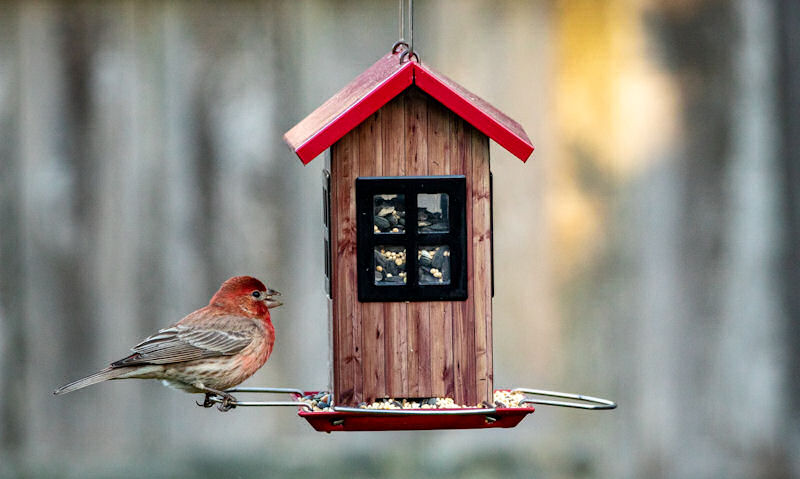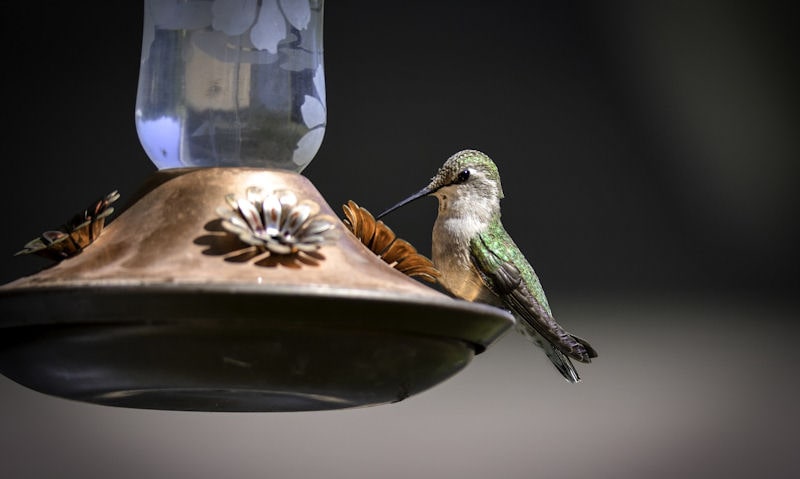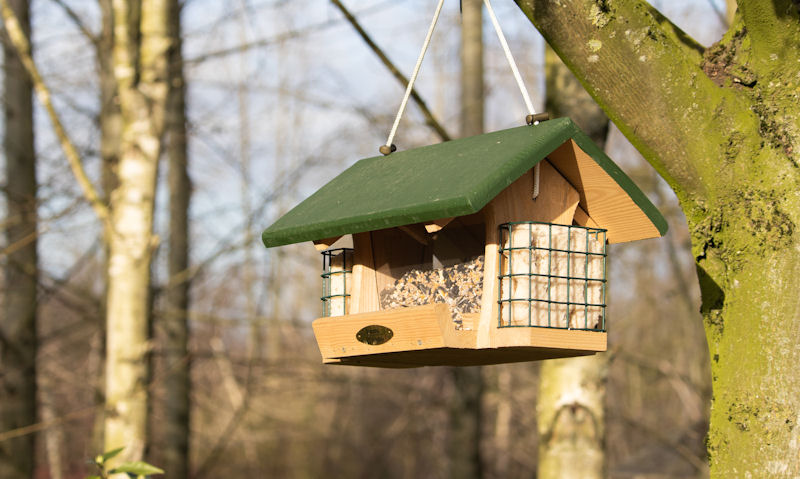How to choose a bird feeder
Its not as straight forward when picking out a bird feeder, as each person receives a number of bird species to their yards that have different bird feeder needs.
How to choose a bird feeder would be to assess what birds frequent your yard the most, but a hanging feeder is a must. Do include a seed, peanut, suet and dried mealworm feeder in your collection; but all issues can be avoided if you were to go for an open top platform feeder for all birds to use.
I'd admit to assess what kind of birds visit your yard daily is not something most people can do, but it can help if you know how birds forage in nature.
Choose bird feeders based on what all these birds feed on in the wild, but you can be sure its going to be seed mixes, nuts, insects and fruit.
And there you have it, what bird feeders to choose would be one or more of a seed, peanut, and dried mealworm feeder - including a suet cake feeder - while baring in mind bird feeders are not designed to hold fruit, unless you use a platform bird feeder.
Design of all four bird feeder types must be made to hang, while allowing birds to perch on an open area, whilst avoiding single short length perches on feeders.
What would be the best choice of bird feeder to buy would be an hopper seed feeder, or indeed an open top platform feeder, that is open to the elements but accessible for all common backyard birds.
Pick one of each feeder but include an additional feeder pertaining to the most popular.
What else you must remember ground feeding birds tend to not use hanging feeders, but can use a platform feeder on a stand, but to use a special ground bird feeder must only be used in addition to hanging feeders listed thus far.
Assess bird species in yard

Before you rush out and buy a random selection of bird feeders, you'd first need to assess what kind of wild birds frequent your yard the most.
Only then can you get a clearer picture of the type of bird feeders you must choose.
What good would it be by using a specialty mealworm feeder when in fact not many or no wild birds at all are insect-eating birds in your yard. Similarly, what if you do receive visits be insect-eating birds, but the feeder to store them is the wrong kind.
Its not all as clear as day with the bird feeder, or indeed many bird feeders you can choose for your yard - but it is based on your own backyard birds' personal needs.
Begin by assessing what bird species frequent your yard the most, and only then can you cater to these birds with the feeder that they are capable of using.
Refer to what common ground feeding birds are, to make use of a ground bird feeder or an open top platform feeder; or why not choose a feeder that hangs, but is compatible with many more birds that visit your yard on a daily basis.
Feeder based on birds dietary needs
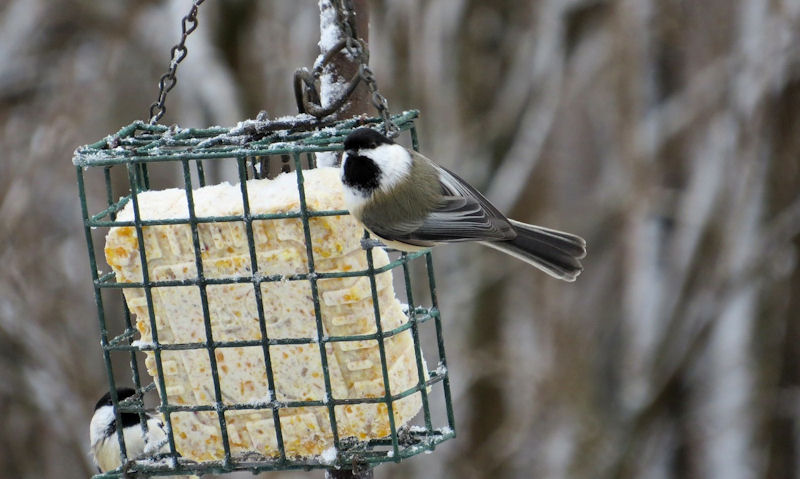
I will tell you now, most common backyard birds that frequent your yard the most, and across the United States in general, are indeed seed-eating birds.
What this means for you is to pick a choice of one to two different types of seed feeders that can assist various bird species needs and feeding abilities at feeders.
You must pick bird feeders based on what these same species feed on in the wild, so a seed feeder is a must.
And whilst birds feed on huge amounts of seed mixes daily, and more so in winter; do offer at least one type of peanut feeder, for these same seed-eating birds and more.
Insect-eating birds do feed on the ground, so of course a ground level bird feeder can come in useful for various types of birds.
What I am getting at is, feeders made available must be made to hold a varied group of wild bird food, as most common backyard birds can be catered to.
Select up to three feeder-types
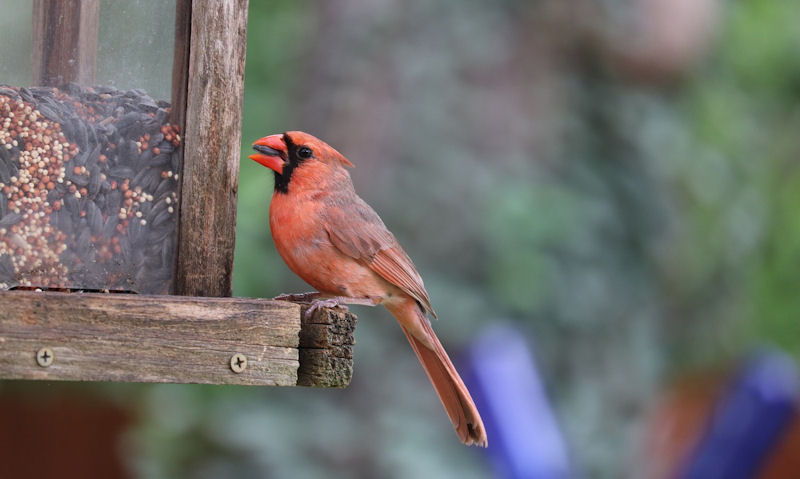
I would recommend you choose up to three, or even four types of bird feeders if you can, as you'd be sure to feed as many birds as possible, while leaving none to starve.
I have to discourage the use of smaller, rounded hanging feeders that hold seeds or peanuts for example, with more practical seed or peanut feeders a must try.
And here are the four types of bird feeders I would be sure to have in my yard:
- Open top platform bird feeder on a stand would solve all these common issues, as its open to all wild birds, with no restrictions whatsoever
- Hopper seed feeder made for seed mixes or specialty seeds only, while offering more open space for small or large birds to perch as they feed at the same time
- Panoramic seed feeder, designed to be hung but the tray fixed to the base makes a useful perching area, and is safe for all size birds
- Caged suet feeder can be vital for serving all wild birds a fatty intake of suet, with the cage being limited, but can cater to many more birds if laid flat
And if you want to substitute any one or more of these bird feeders mentioned, then you certainly can do that.
I haven't listed a peanut feeder, so a mesh peanut bird feeder can come in handy. What else can be vital for insect-eating birds is an open dish dried mealworm feeder.
Feeders must hang
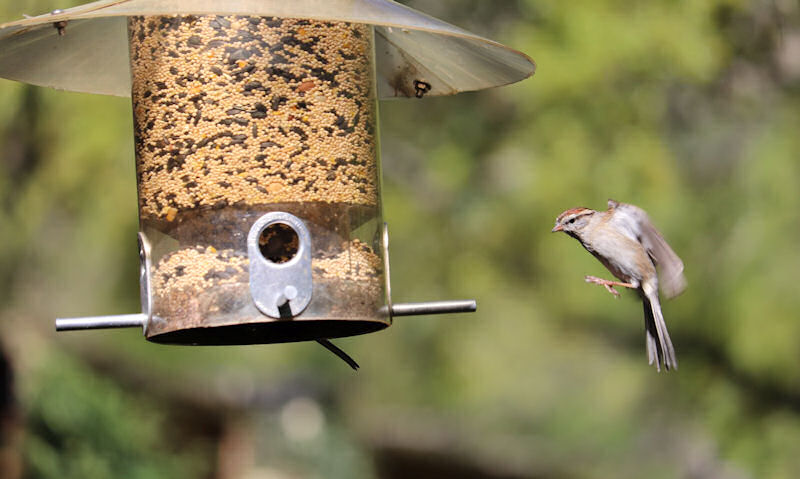
Well, not all of them but in order to keep wild birds safe, a hanging bird feeder must be the feeder type of choice, in which can help keep bird food in better condition.
Hanging bird feeders are a good choice because not only will many common birds use them - by perching or clinging - feeders made to hang can be placed near to where birds prefer to forage in the yard, and therefore in the wild.
I would choose a central spot in the yard, as to position the bird feeders out in the open on a bird feeding station - whilst allowing you to enjoy the birds feeding behavior at the same time.
It can't always be like that, as with Bluebirds or American Robins they could benefit with a bird feeder hanging off a tree branch; whereas an Hummingbird feeder would prefer a spot under the porch, near to insect-attracting plants.
Having said all that, not all bird feeders must hang, and that is especially true with my favorite bird feeder type of them all... the open top platform bird feeder on a stand.
Open top to allow any bird species to land on the rim to perch as they feed; whilst on a stand to avoid the restricting hanging platform bird feeder kind.
If not a hanging bird feeder or one that is on a stand, you should at least include a ground platform bird feeder so no birds go without.
Hangers may be needed

When choosing a bird feeder, please be sure to consider where this feeder will be hung up in your yard, before picking out a number of bird feeders of your choice.
You see not all bird feeders can be hung right away, and certainly as you'd expect from the get-go; as feeders often need additional accessories as to get the bird feeder hanging bar, hanging up over a tree branch, but less so a purpose made feeder bracket.
What you must remember the default bird feeder hook for hanging can be a full loop or a hanger - or it could be too small but rarely is it a large hook or hoop.
This is where you'd whip out the bird feeder hangers, as to use it to hook the feeder, whilst the hanger than hoops or hooks over the awkward object, such as a chunky tree branch.
Hangers may be needed with your personal setup, but if you plan to hang a bird feeder of any kind, an additional hanger probably won't be needed.
If you use a platform bird feeder to feed all wild birds in your yard, this kind of thing is not a concern.
Choose a bird feeder then with the recommended hanger or extension needed that is offered at checkout, or by the same manufacturer, just in case of incompatibility issues.
What NOT to choose
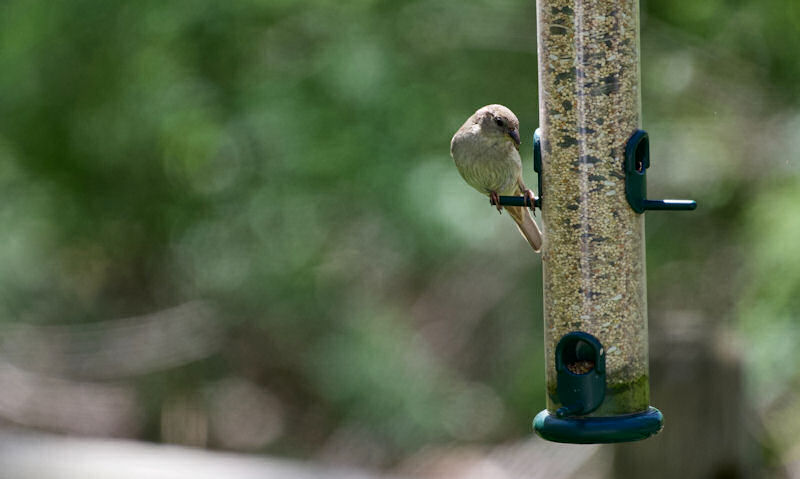
What you shouldn't buy in terms of one or a group of feeders, is to avoid feeding species with one dietary need only, or feeders that are hard to use for most birds.
Do use a seed feeder that uses a larger than normal perch surround, while avoiding a plastic tube seed feeder [as pictured above] that uses two or more perches with feeding ports sitting directly on top.
Don't use a hanging platform bird feeder as its restricts birds that can only forage higher up, so be sure its an open top platform feeder on a stand only, about 4 feet high.
Feed birds dried mealworms to cater to insect-eaters, which you'd find is many of them.
Use the open top platform feeder to serve up mealworms in dried or live form, but only use a dried mealworm feeder dish - with no dome cover restricting larger birds.
Suet bird feeders come in all shapes and sizes, but favor a simple cage suet feeder to hold suet cakes only. It can be hung if you have to but the suet cage can be put on a surface to allow more birds to feed with ease.
When offering peanut kernels, not shelled nuts, do offer them in a sort of peanut wreath feeder, to allow birds to cling on the side or upside down, or indeed perch on top.
All issues outlined above can be avoided if choosing an open top platform feeder, or to avoid pests or predators on the ground with your special circumstances, a hanging hopper feeder will do the trick.
To summarize
How you would choose a bird feeder for your yard, is to begin by assessing what kind of birds frequent your yard more than others.
I will admit not all of you would tell the difference, but what I can say most of these wild birds feed on a daily intake of seeds mostly, including nuts, insects and wild fruits in the wild, but mostly berries.
Its recommended then you cater to these birds with types of bird feeders designed to hold these food groups, and more.
Choosing a seed feeder is a must, as most backyard birds are seed-eaters.
You must then go for a larger seed feeder to allow the less agile birds to use it; pick a panoramic seed feeder over a more compact narrow plastic tube feeder.
With that seed feeder, use a wreath peanut feeder to allow birds to cling or perch on top.
Not forgetting a dried mealworm feeder to cater to many insect eaters; with an open dish with no dome to act as shelter - in which is a better option than a mesh dried mealworm feeder.
To feed suet to birds in an unobstructed way, a simple suet feeder to hold suet cakes will do. If you lay it on its side on a flat surface far more birds can feed; allowing to hang can reduce which birds use it - but can deter nuisance larger birds or ground pests.
Not forgetting ground feeding birds, as to buy as an additional feeder only and not a replacement of all hanging feeders mentioned.
To guarantee most birds are fed properly, use a hanging hopper bird feeder, with an open top platform bird feeder being the choice for most birds in our yards.
